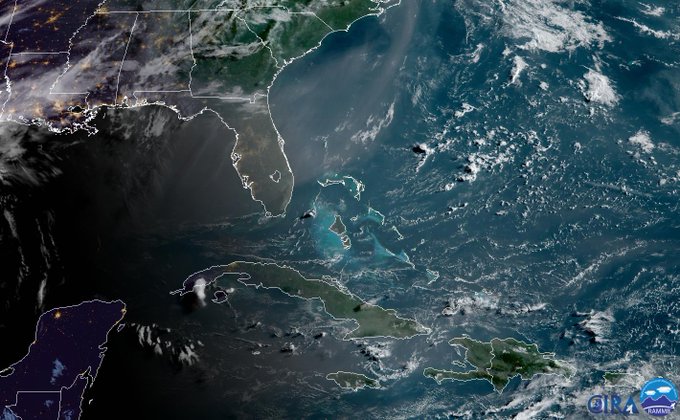By Adriana Navarro, AccuWeather staff writer
From volcanic ash to smoke to dust that suppresses tropical development, these extra particles in the atmosphere can help to create a dazzling display of color at sunsets.
For a few months out of the year, the Gulf Coast of the United States can be treated to more vibrant sunsets thanks to Saharan dust carried by trade winds across the Atlantic Ocean.
Although these sunsets are more notable around the Caribbean Sea, sometimes the dust spreads northwards to the Gulf Coast, near Florida and sometimes Texas, bringing picturesque sunsets with them.
"The dust causes the sky to be milky and hazy and not the more deep blue that is most common on sunny days," AccuWeather Hurricane Expert Dan Kottlowski said.
A combination of the Coriolis Effect and an area of high pressurecause the trade winds, which have helped early traders and travelers cross from Europe and Africa to the Americas, according to the National Oceanic and Atmospheric Administration (NOAA).
The dust that these winds carry don't just create stunning sunsets, however. It's because of the influx of Saharan dust during June and July that hurricanes in the Atlantic Ocean aren't as active as they are during August and September.
"The dust tends to suppress the development of showers and thunderstorms in the tropics, necessary for tropical development," Kottlowski said. "This suppression is one of the reasons tropical development is strongly hindered during June and July. It is during these months where we see the greatest transport of dust across the southern North Atlantic."
RELATED:
Could a tropical storm brew before the middle of July in Gulf of Mexico?
Barbara to swipe Hawaii with rain, rough seas early this week
AccuWeather’s new RealImpact™ Scale for Hurricanes will revolutionize damage predictions for greater public safety
Could a tropical storm brew before the middle of July in Gulf of Mexico?
Barbara to swipe Hawaii with rain, rough seas early this week
AccuWeather’s new RealImpact™ Scale for Hurricanes will revolutionize damage predictions for greater public safety
This dust comes all the way from Africa's Sahara Desert as strong dust storms form during the spring and early summer, according to Kottlowski.
After thunderstorm complexes spread northward to the southern edge of the African desert early in the summer, the door will then open for hurricane season to ramp up.
"Once the soil over the southern desert areas become more moist, there is less dust picked up by the winds and dust becomes less of an issue during August and September into October," he said. "This is one of the reasons why this time period leads to the most active of the Atlantic Hurricane season."
Trade winds are not the only force of nature that delivers these hazy sunsets. Particles from wildfires, volcanic ash even pollution can attribute to how sunsets look in certain areas. As wildfires from Alaska to northwestern Canada continue to burn, people living around the areas, and even areas hundreds of miles away, are witnessing hazy red sunsets.
From around May 31 to about June 6, 2019, winds carried smoke from massive wildfires in Alberta, Canada, to the northeastern U.S., making sunsets more vibrant until the winds changed. It happened again in late in the month around June 22.
The smoke from several wildfires in Canada was so thick that it was visible from 1 million miles away from Earth, according to NASA. The agency noted the Chuckegg Creek wildfire in Alberta, Canada, as one of the larges sources of smoke.










No comments:
Post a Comment